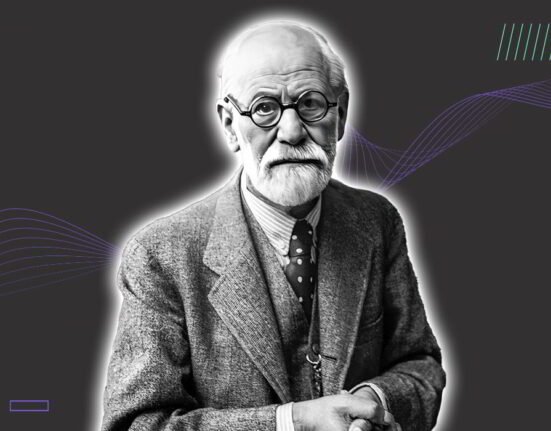An often-shrouded controversial topic in the field of psychiatry or intervention is the emergence of Electroconvulsive therapy (ECT). Electroconvulsive therapy also known as ECT is a psychiatric treatment that involves sending electrical stimulation to the brain. This causes a brief surge in the brain causing seizures.
The historical context of ECT
The roots of electroconvulsive therapy can be traced back to as early as the 20th century. It was Laszlo Meduna, a Hungarian Neuropsychiatrist which he used for the treatment of a patient with catatonic stupor. Before ECT, substances like Metrazol were used to produce seizures as a form of treatment modality. Electroconvulsive therapy can alleviate certain psychiatric symptoms, providing significant enhancement of mental health conditions.
Read More: Positive Psychotherapy: A Unique Approach to Mental Health
Mechanism of ECT
ECT induces a seizure in the brain that modulates the effects on neurotransmitters, especially dopamine and serotonin. ECT acts on cytokines reducing inflammation and normalizing the levels of cortisol. The seizures induced by ECT can induce a rewiring mechanism in the neurons of the brain. ECT can also cause hormonal changes and alter the stress hormones leading to have impact on the emotional regulation of the individual.
Read more: Autism Spectrum Disorder: Causes, Symptoms, Types and Treatment
Procedure of ECT
The basic preparations for ECT include the following:
- Basic preparation: a proper and thorough medical and psychiatric assessment has to be taken before the procedure of Electroconvulsive therapy. A moderate number of fluids can be taken till 2 hours before treatment. Dentures, jewellery, hair clips, lenses, and aids should be removed. Consent should be sought informing all the details that should include: proper guidance and information of all the processes, mechanisms, procedures, their effects, etc.
- Anaesthesia should be administered in such a way that the patient should not experience pain during the procedure. Medications are provided as a means for muscle paralysis for a temporary duration.
- Electrode placement: Electrodes are placed strategically on the patient’s scalp. It can be positioned unilaterally or bilaterally.
- Electrical stimulation: a short-term controlled electric current would be passed through the electrodes which may cause seizures in the brain. This stimulation would last for a few seconds to maybe a few minutes.
Effectiveness of ECT
Electroconvulsive therapy has been found effective in the following mental health conditions: Mood disorders- Major depressive disorder, thought disorders which include Schizophrenia, and schizoaffective disorder; other psychiatric disorders may include dysthymia, anxiety disorders, eating disorders, substance abuse disorders, and personality disorders. It has selectively been used for certain general medical conditions including Parkinson’s disease, neuroleptic malignant syndrome, epilepsy, etc. ECT has been found effective in the treatment of depression especially among pregnant women and nursing individuals.
Electroconvulsive Therapy in today’s world
Electroconvulsive therapy has been found as one of the most valuable and effective treatments for certain mental health conditions. Though ECT had certain controversies regarding its usage, it has now evolved in terms of procedure, process, administration, safety, and mechanisms. Today, it has been undertaken in a more controlled environment where every procedure is monitored carefully. This includes monitoring patient preparation, patient comfort, and their safety as the utmost priority.
Read more: Drama Therapy: What it is & How does it work?
Electroconvulsive therapy and its side effects
Though ECT has been used as one of the treatment options, it does have its disadvantages and complications. This may include:
- It has the risk of causing memory loss. This memory impairment is mostly for a short while and they may experience difficulty in recalling events during the procedure of Electroconvulsive therapy.
- It certainly has deterioration in the cognitive aspect of the individual including confusion, disorientation, etc.
- Headache, muscle contractions, nausea, and jaw pain have been seen as the most common physical complaints after the treatment episode of ECT.
- Some individuals may have certain changes in the cardiovascular system where they have transient changes in the heart rate, blood pressure, etc.
- Some individuals may experience anesthesia-related side effects.
ECT in Children and Adolescents
ECT has been used rarely among children and Adolescents. The data limits that children may have potential effects after exposure to ECT which is why it’s limited to use. The reasons may be classified into major four factors: may have relatively drastic impairment in children; lack of experience of child psychiatrists with ECT; concern that seizures may cause more toxicity among children; and the law and regulations prohibit the administration of ECT among children and Adolescents.
Read More: Humanistic therapy: process, uses, types, and advantages
ECT among the Elderly
The usage of ECT is generally found safe among the elderly. It does present certain challenges. It might increase the risk of certain medical conditions among the elderly population. Researches also indicate profound cognitive impairment among the elderly population. Patients with any premorbid disorders or medical conditions may have increased risk associated with ECT. The already prevailing medical illness may further induce complications of Electroconvulsive therapy.
Read More: 8 Techniques from Cognitive-Behavioural Therapy for Positive Change
Treatment course and Follow-up
The number of sessions may vary based on the patient’s condition. Usually, it varies from the number of sessions over several weeks. Monitoring frequently is essential with Electroconvulsive therapy. This is very important to monitor mental health and effectiveness. The individual differences vary according to the individual’s physical and mental health. Side effects are not something that everyone will experience mandatorily. There have been many advancements in terms of providing ECT to patients compared with earlier times. These advancements have reduced the side effects to a certain extent.
References +
- https://my.clevelandclinic.org/health/treatments/9302-ect-electroconvulsive-therapy#risks-benefits
- https://www.psychiatry.org/patients-families/ect
- https://www.verywellmind.com/electroconvulsive-therapy-2795172
- https://www.neuromodulation-crc.ipsych.in/wp-content/uploads/2021/12/ECT-Manual-NIMHANS-1.pdf
- https://my.clevelandclinic.org/health/treatments/9302-ect-electroconvulsive-therapy#procedure-details













Leave feedback about this